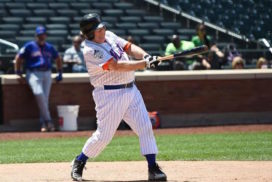SHOULDER ARTHRITIS
What is Shoulder Arthritis?
Shoulder Arthritis is a medical condition where the smooth cartilage covering the ball and socket of the shoulder degenerates over time as a result of wear and tear, injury, or disease.
There are five categories common forms of Shoulder Arthritis:
Osteoarthritis: The degeneration of joint cartilage and the bone beneath it. This condition causes moderate to severe pain and stiffness in affected joints. It is a common condition in middle aged adults.
Inflammatory Arthritis: A group of diseases that feature inflammation of joints and surrounding tissue. The following are commonly grouped under Inflammatory Arthritis:
- Rheumatoid Arthritis
- Psoriatic Arthritis
- Ankylosing Spondylitis
- Juvenile Idiopathic Arthritis
- Systemic Lupus Erythematosus (lupus)
With these conditions, the joints and their linings are inflamed, causing the cartilage surfaces to wear down. The great news is that modern medicine has progressed significantly in treating the many forms of inflammatory arthritis, rendering surgery a far less common need.
Cuff Tear Arthropathy: A degenerative arthritis that impacts the integrity of rotator cuff tendons over time. It can be characterized as a combination of shoulder arthritis and a large rotator cuff tear. Surgery is recommended to smooth over or completely replace the joint with a prosthesis, and is often the best way to restore functionality.
Osteonecrosis (Avascular necrosis): A rare disease that interrupts the blood supply to the humerus bone that is the ball of the shoulder, causing parts of it to die, and collapse. When the humerus is no longer able to support your arm and shoulder, the cartilage in the shoulder is subject to damaging levels of pressure.
Post-Traumatic Arthritis: A form of osteoarthritis that develops in joints after an injury of any kind. Over time, this condition can lead to the surface of the joint’s cartilage to wear out, and disappear entirely.
What are the Causes of Shoulder Arthritis?
Common causes for Shoulder Arthritis include:
- Wear over time
- Injury to shoulder
What are the Symptoms of Shoulder Arthritis?
Common symptoms of Shoulder Arthritis include:
- Pain with activity
- Stiffness
- Limited range of motion
What are the Treatments for Shoulder Arthritis?
Non-Surgical Treatment
Before considering surgery, if your injury or condition is not severe, treatment will at first be nonsurgical. Your doctor may recommend the following treatment options, among others:
- Increased rest and a decrease in activity levels
- Physical therapy sessions at a licensed facility
- Over the counter pain medications, including NSAIDs, such as aspirin, which can help with pain and discomfort.
- Corticosteroid injections in the shoulder can significantly alleviate inflammation and pain—but only temporarily.
- Heat and Ice on the shoulder
Surgical Treatments
What is the subacromial space? Why does it cause pain?
The subacromial space is located just outside of the shoulder joint capsule, between the acromion of the shoulder blade and the head of the humerus. Structures in the space include the subacromial bursa, coracoacromial ligament, and the supraspinatus tendon. If the rotator cuff of the shoulder is weak, the humeral head will not remain centered in its socket, and will glide upwards during overhead activities, and will pinch the structures in this space. Chronic pinching causes inflammation, resulting in the mechanism known as “Impingement Syndrome”, and is the source of your pain.
What does this surgery entail?
A subacromial decompression is an arthroscopic procedure; the entire procedure is conducted through several small incisions. The damaged tissue crowding the subacromial space is removed and a portion of bone from the underside of the acromion is shaved down to create more space so that the tendons of the rotator cuff are free to glide without impingement or catching on the bone. Essentially, the operation raises the roof of the acromion to allow more space beneath to decrease inflammation. Once adequate space is restored, the supraspinatus tendon will have the opportunity to heal, pain with overhead activities should decrease and range of motion should be restored.
How long will I stay in the hospital?
This surgery is done as ambulatory surgery, meaning you will go home the same day of surgery.
What are the possible risks and complications of surgery?
As with any surgery there is a risk of nerve damage and postoperative infection, though these are extremely rare. Specific risks and complications include but aren’t limited to persistence of symptoms and post-op stiffness.
When can I drive?
You may not drive while taking pain medication or while wearing a sling.
When will I return to my prior level of function?
Typically, a 3-4 month period of rehabilitation is required for full function to return. Working hard in physical therapy, and strictly following the exercise program may shorten this process.
When can I start to run or return to sports?
Running is not recommended for the first 4-8 weeks after surgery. Running does produce stress on the shoulder joint, and will be detrimental to the healing process. You can ride a recumbent bike a couple weeks after surgery and then progress to Elliptical machine without arm motions. Return to sport will be based on your progress with physical therapy and sport of choice. You can expect to return to full strength in 3-4 months.
What is the acromion joint? Why do I have pain here?
The acromion joint connects the end of the clavicle (collar bone) to the acromion of the shoulder blade, the “roof” of the shoulder joint. The acromion joint space is very small and can easily become irritated with inflammation. This inflammation may be caused by repetitive overhead activities or narrowing of the joint space, commonly known as arthritis. Arthritis in this joint occurs in a much younger population than other forms of arthritis. The inflammation in the joint makes the tissue unhealthy and causes pain.
What does this surgery entail?
An AC joint resection, also known as a distal clavicle excision, is an arthroscopic procedure; the entire procedure is conducted though several small incisions. The damaged tissue, and bone, surrounding the acromion joint is shaved down to create more space and to allow the acromion and clavicle to easily glide without creating inflammation. Once adequate space is restored, pain with overhead activities should decrease and range of motion should be restored.
How long will I stay in the hospital?
This surgery is done as ambulatory surgery, meaning you will go home the same day of surgery.
What are the possible risks and complications of surgery?
As with any surgery there is a risk of nerve damage and postoperative infection. Specific risks and complications include but aren’t limited to persistence of symptoms, post-op stiffness, and arthritis.
When can I drive?
You may not drive while taking pain medication or while wearing a sling.
When will I return to my prior level of function?
Typically, a 3-4 month period of rehabilitation is required for full function to return. Working hard in physical therapy, and strictly following the exercise program may shorten this process.
When can I start to run or return to sports?
Running is not recommended for the first 4-8 weeks after surgery. Running does produce stress on the shoulder joint, and will be detrimental to the healing process. You can ride a recumbent bike a couple weeks after surgery and then progress to Elliptical machine without arm motions. Return to sport will be based on your progress with physical therapy and sport of choice. You can expect to return to full strength in 3-4 months.
Am I a candidate for total shoulder (TSR) or reverse total shoulder replacement (rTSR)?
You are a candidate if you have severe shoulder pain, examination findings that point towards arthritis of the shoulder, and if you have tried non-surgical treatments, such as injections and physical therapy, with no relief of symptoms. TSR or rTSR is indicated when there is damage to the cartilage to the glenohumeral joint; the ball (humeral head) and socket (glenoid) joint of the shoulder. Cartilage is the shiny, smooth coating at the end of bones. It protects the bone and allows the bones to move smoothly and efficiently.
What caused my shoulder to become arthritic?
Shoulders can become unstable/arthritic for a variety of reasons. Because they bear significant stress over the course of our life, some degeneration is simply the result of wear and tear on the shoulder, especially the cartilage. This can also be due to certain medical conditions, such as rheumatoid arthritis, trauma, genetics, or a large irreparable rotator cuff tear.
What’s the difference between a TSR and rTSR?
The goal of two surgeries is essentially the same: to replace the arthritic shoulder joint with a new artificial joint. The main difference between the two surgeries is where the two components are placed. The rotator cuff made up of four thick muscles in the shoulder, provides stability to the shoulder, and is in charge of movement of the shoulder. If the rotator cuff is intact, a TSR would be completed, however, if the rotator cuff is torn and not repairable, a rTSR would be completed. In a rTSR, the components are switched. So instead of the ball component going into the humerus and the socket component going into the glenoid (attached to the scapula); the ball component goes into the glenoid, and the socket component goes into the humerus.
What happens during TSR/ rTSR surgery?
During the operation, you will be under general anesthesia, positioned in a “beach-chair,” or sitting up, position. For anesthesia, general and regional anesthesia is used. An incision, 6-8 inches long, is made on the front of the shoulder. The worn ends of the humerus and glenoid are removed and then shaped to fit the implant, which is inserted and attached to the bones with cement. The exact type of implant used is called Biomet Comprehensive Total Shoulder System; it is made of cobalt chrome metal and high molecular weight plastic. Incision is closed with absorbable sutures and Dermabond, surgical glue/tape.
How long will my implants last?
The lifetime of the implants varies, depending on the patient’s lifestyle and compliance with post-operative instructions, the fit of the implants, and, of course, chance. However, 90% of patients have functional implants 10-20 years after their TSR/ rTSR surgery. The reasons for failure include infection, implant instability, or fracture.
How long will I stay in the hospital?
This surgery is an in-patient procedure, meaning you will stay in the hospital after surgery. A typical hospital stay is 1 night. You will then be discharged home.
What are the possible risks and complications of surgery?
As with any surgery there is a risk of DVT, nerve damage, bleeding, and postoperative infection. Specific risks and complications include but aren’t limited to infection, fracture, post-op stiffness, and hardware complications.
When can I drive?
You may not drive while taking pain medication or while wearing a sling.
When can I go back to work?
The recovery time needed before returning to work varies depending on your type of work, but is at least 3 weeks for office work and 8 weeks for manual labor.
When can I start to run or return to sports?
Running does produce stress on the shoulder joint, and will be detrimental to the healing process. You can ride a recumbent bike a couple weeks after surgery and after a few months you can progress to Elliptical machine without arm motions. You should avoid running for the first 3 months. Return to sport will be based on your progress with physical therapy and sport of choice. Typically, a 6 month period of rehabilitation is required for full function to return. Working hard in physical therapy, and strictly following the exercise program may shorten this process.




